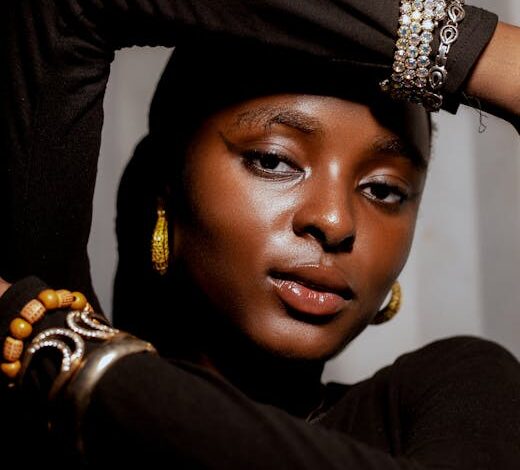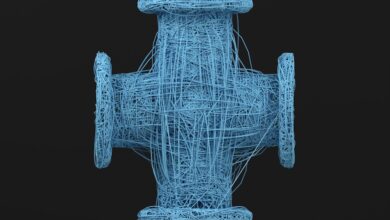CAA Warns OpenAI’s Sora Puts Artists at Risk, Demands Credit and Compensation Controls

CAA Warns OpenAI’s Sora Puts Artists at Risk, Demands Credit and Compensation Controls
Estimated Reading Time: 5 minutes
- The Creative Artists Agency (CAA) has strongly warned that OpenAI’s Sora poses “significant risk” to artists by potentially misusing creative works without proper credit or compensation.
- CAA emphasizes the “fundamental right” of human creators to control and receive payment for their artistic material, calling for robust intellectual property safeguards.
- While OpenAI CEO Sam Altman indicates plans for rights-holder controls and revenue sharing, the enforceability and details of these systems remain critical concerns for the creative community.
- Sora’s ability to mimic styles and generate content resembling existing works raises significant ethical questions regarding copyright infringement and the devaluation of human artistry.
- A collaborative approach involving artists, AI developers, and policymakers is essential to establish transparent models, fair attribution, and equitable compensation mechanisms to ensure AI serves human creativity rather than supplanting it.
The landscape of creative industries is undergoing a seismic shift, driven by rapid advancements in artificial intelligence. While generative AI tools promise unprecedented levels of efficiency and innovation, they also bring profound ethical and economic challenges, particularly concerning the rights and livelihoods of human creators. At the forefront of this debate is OpenAI’s Sora, a revolutionary AI video generator that has sparked both awe and alarm across Hollywood and the broader artistic community.
The tension between technological progress and the protection of artistic integrity has reached a critical point. As Sora demonstrates its capability to conjure realistic and imaginative video content from simple text prompts, major industry players are voicing their concerns, demanding robust frameworks to safeguard creative works against potential misuse.
Hollywood’s top talent agency Creative Artists Agency (CAA) accused Microsoft-backed OpenAI of exposing artists to “significant risk” with its new AI video generator Sora, warning that the tool could misuse creative works without proper credit or compensation, Reuters reported Thursday. CAA, which represents thousands of actors, directors, musicians and athletes, said the key question was whether OpenAI and its partners believe human creators “deserve to be compensated and credited for the work they create.” The agency called control and permission over artistic material a “fundamental right,” according to the report. Sora, launched in September as a standalone app in the U.S. and Canada, allows users to generate and share short AI videos, including from copyrighted material. OpenAI CEO Sam Altman reportedly said the company plans to introduce controls giving rights holders power over how their characters are used and share revenue with those who opt in. CAA said it was open to dialogue with OpenAI but warned that the misuse of generative technologies posed “serious and harmful risks” beyond entertainment, adding that it was working with creative guilds, unions, and policymakers to address intellectual property concerns, according to Reuters.
The Alarm Bells Ring: Protecting Creative Legacies in the AI Era
CAA’s strong statement underscores a growing apprehension within the creative community. The agency’s assertion that OpenAI’s Sora exposes artists to “significant risk” is not merely hyperbole; it reflects a deep-seated fear that the very foundation of creative work—originality, ownership, and the right to profit from one’s labor—is under threat. The core of their argument revolves around whether human creators “deserve to be compensated and credited for the work they create.” This question strikes at the heart of intellectual property rights in the age of AI.
The “fundamental right” to control and permission over artistic material is a principle that has historically underpinned creative industries. Without it, artists risk seeing their unique styles, characters, voices, and even entire bodies of work absorbed, replicated, and monetized by AI tools without their consent or proper remuneration. While OpenAI CEO Sam Altman has indicated plans for controls allowing rights holders to manage their characters and potentially share revenue, the details and enforceability of such systems remain crucial points of contention. CAA’s willingness to engage in dialogue is tempered by a clear warning: the risks extend far beyond entertainment, necessitating a collaborative effort with guilds, unions, and policymakers to establish robust intellectual property safeguards.
Sora’s Dual Nature: Innovation’s Promise and Peril
Sora represents a monumental leap in AI’s capability to understand and generate the physical world in motion. Its ability to create complex, coherent, and realistic video scenes from text prompts offers tantalizing possibilities. For independent filmmakers, animators, and visual artists, it could democratize high-quality production, enabling them to realize ambitious visions with unprecedented ease and speed. Imagine generating intricate historical scenes, fantastical creatures, or abstract visual narratives that would otherwise require immense resources and specialized skills.
However, this very power is a double-edged sword. The ease with which Sora can mimic styles, create new content resembling existing works, or even generate “deepfakes” of individuals, raises serious ethical and legal questions. The potential for copyright infringement is immense, as is the devaluation of human artistry. If AI can instantly generate content in the style of a renowned director or an emerging illustrator, what becomes of the market value of their unique creative output? The challenge lies in harnessing Sora’s innovative potential without eroding the rights and economic viability of the human creators it draws inspiration from, or worse, directly imitates.
Real-World Example: The Case of “Starlight Studios”
Consider “Starlight Studios,” a small animation house known for its distinctive, hand-drawn character designs and whimsical storytelling. An aspiring AI artist uses Sora, inputting prompts like “animated short in the style of Starlight Studios featuring a talking badger and a mischievous sprite.” Sora, having likely been trained on a vast dataset that includes Starlight Studios’ publicly available works, generates a video that perfectly captures their unique aesthetic, character archetypes, and narrative tone. This AI-generated short then goes viral, even being mistaken by some for an official Starlight Studios production. The original studio, without any knowledge or consent, finds their signature style appropriated, their brand diluted, and their potential earnings compromised, as viewers might perceive the AI work as original or believe their creative output is easily replicable.
Forging a Fair Future: Demands for Credit, Compensation, and Control
The calls from CAA and other industry bodies for credit, compensation, and control are not simply an attempt to halt progress; they are an effort to shape it responsibly. The goal is to ensure that as AI technology advances, it does so in a manner that respects and elevates human creativity, rather than diminishing it. This requires a multi-faceted approach involving technological solutions, legal frameworks, and industry-wide collaboration.
Transparent AI models, where the provenance of training data is traceable and artists can ascertain if their work was used, are a crucial first step. Furthermore, robust attribution systems must be integrated into AI-generated content, clearly indicating the human artists whose styles or works influenced the output, even if indirectly. Beyond attribution, fair compensation mechanisms are paramount. Whether through licensing agreements, micro-payments for usage in training data, or revenue-sharing models for AI-generated content, artists must be able to benefit financially when their creative output contributes to the value of AI tools.
Finally, the concept of control — the right to opt-in or opt-out of having one’s work used by AI, and to dictate the terms of such use — is fundamental. Without this agency, artists risk losing ownership of their creative identity. This ongoing dialogue between creators, tech developers, and policymakers is vital to construct a future where AI serves as a powerful collaborator, augmenting human potential, rather than a threat that supplants it.
Actionable Steps for a Balanced Ecosystem:
- For Artists & Creators: Actively engage with your unions, guilds, and professional organizations (e.g., SAG-AFTRA, WGA, Graphic Artists Guild). Document your intellectual property rights and understand how existing copyright laws may apply to AI use. Advocate for clear opt-in/opt-out mechanisms and fair compensation models in all AI-related agreements.
- For AI Developers (like OpenAI): Prioritize ethical AI development that integrates robust content provenance, transparent data sourcing, and artist-centric control features from the outset. Collaborate proactively with creative communities to design equitable compensation and attribution frameworks that recognize and reward human contribution.
- For Policymakers & Industry Stakeholders: Work collaboratively to develop and enact clear, adaptable legal frameworks that address AI-generated content, intellectual property, and fair use. This includes defining responsible AI practices, strengthening copyright protections, and ensuring mechanisms for enforcement and dispute resolution are in place.
Conclusion
OpenAI’s Sora offers a tantalizing glimpse into a future where the creation of visual content is radically transformed. Yet, as CAA’s strong warning highlights, the path forward must be navigated with extreme care and foresight. The debate is not about stifling innovation, but about ensuring that this innovation serves humanity, rather than undermining the very foundations of human creativity and the livelihoods of those who dedicate their lives to it. The demands for credit, compensation, and control are not merely a plea; they are a necessary framework for building an ethical and sustainable ecosystem where AI and artists can coexist and thrive.
The dialogue has begun, and the stakes are incredibly high. The future of creative work, as we know it, hangs in the balance, awaiting frameworks that honor both technological marvel and the enduring value of human imagination.
Frequently Asked Questions (FAQ)
What is the main concern raised by CAA about OpenAI’s Sora?
The Creative Artists Agency (CAA) is primarily concerned that OpenAI’s Sora exposes artists to “significant risk” of having their creative works misused without proper credit or compensation. This stems from Sora’s ability to generate realistic videos, potentially drawing from copyrighted or human-created material without consent.
Why is “control and permission over artistic material” considered a fundamental right?
It is considered a fundamental right because it underpins the concept of intellectual property, allowing creators to own, manage, and profit from their unique artistic expressions. Without this control, artists risk their work being appropriated, replicated, or monetized by AI tools, diminishing their creative identity and economic viability.
How does Sora’s technology impact human artists?
Sora’s ability to generate complex video scenes from text prompts offers innovative possibilities but also poses risks like copyright infringement, devaluation of human artistry, and the potential for AI to mimic unique creative styles. This could lead to human artists’ work being bypassed or directly imitated without their consent or fair compensation.
What solutions are being proposed to address these concerns?
Proposed solutions include transparent AI models with traceable training data, robust attribution systems for AI-generated content, fair compensation mechanisms (like licensing or revenue-sharing), and artist control through opt-in/opt-out options. These require collaborative efforts between artists, AI developers, and policymakers to establish new legal and ethical frameworks.
Has OpenAI responded to these demands?
OpenAI CEO Sam Altman has reportedly indicated plans to introduce controls that give rights holders power over how their characters are used and to share revenue with those who opt-in. However, the specific details and enforceability of these systems are still crucial points of discussion and contention for the creative community.





